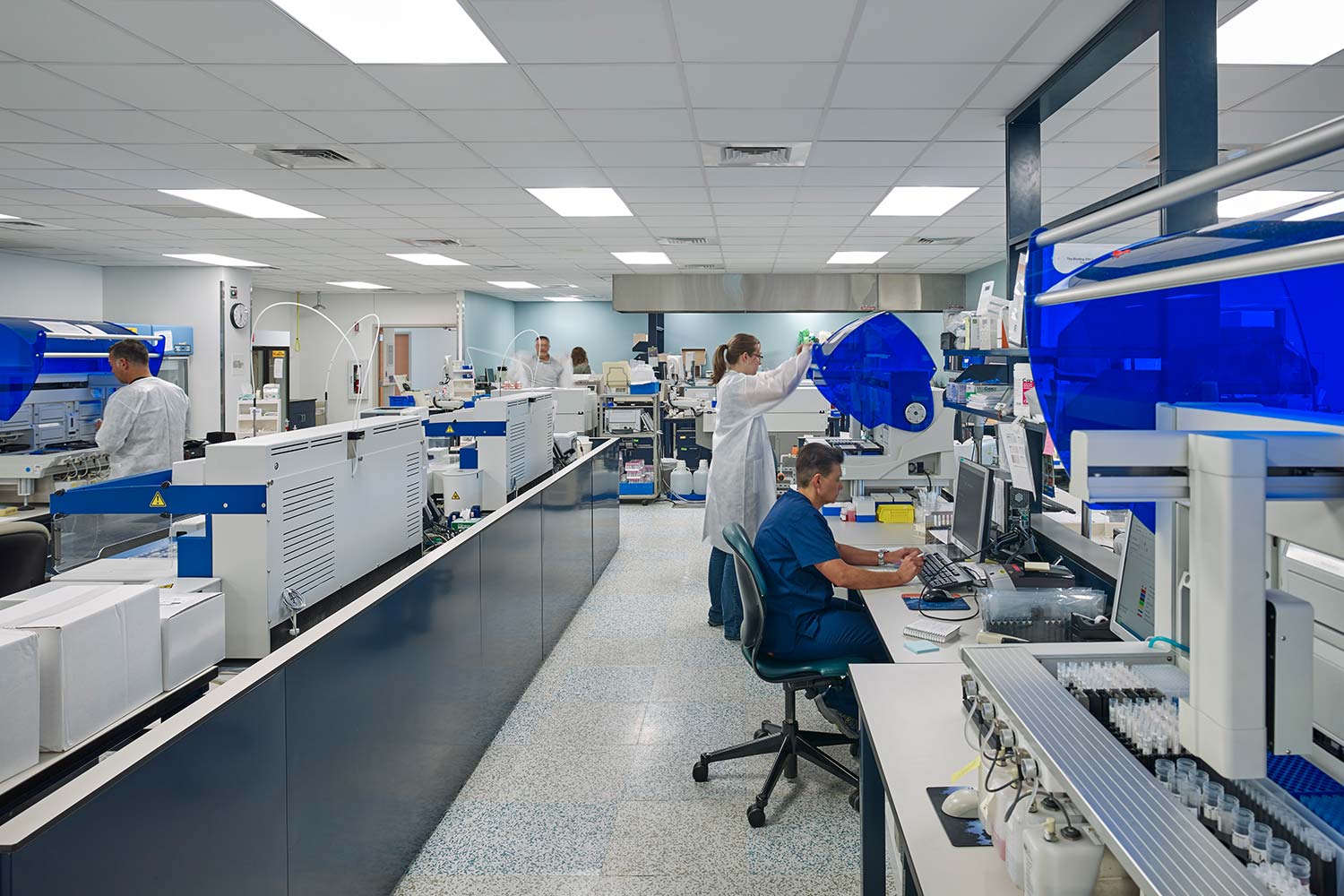
05 Aug The New Reality of Laboratory Design

The New Reality of Laboratory Design
Q&A with Sara J. Eastman, AIA
Principal, Science + Technology
EwingCole Architecture & Planning
Medical Lab Management: Clearly, the onset of the COVID-19 pandemic will widely affect the way workspaces are designed and assembled in the future, but what early ideas might be applied to hospitals in general, and clinical laboratories, specifically?
Sara Eastman: The COVID-19 pandemic will most certainly affect workspace design in the future and the medical profession is likely to see substantial change. Although flexible and modular design elements have been appealing to laboratory practitioners for some time now, among the effects of the pandemic has been the exposure of how space constraints and design rigidity can blunt the response to unexpected changes in workload and type. Therefore, out of necessity, clinical laboratories will need to continue to be designed with flexibility at their core and with the assumption that a massive shift in technology use and testing procedure may arise again.
In order to accommodate an unexpected and sustained spike in testing volumes for the public, larger laboratory testing centers (particularly those that handle a substantial outreach business) need to place a design focus on enabling the rapid on-boarding of instruments and analyzers into the existing workflow; this latter point is just as important as the former. When planning for the acquisition and placement of a large chemistry analyzer, consider whether another piece of the same or similar instrumentation could be added to that space (this includes power, plumbing, IT networking, etc). What this may ultimately require is for many facilities to adopt large, open, and flexible floorplan layouts with multiple access points (eg, floor, walls, and ceiling), both for current and potential technology additions and the staff members they would require to manage.
MLM: Certain clinical laboratory disciplines, such as microbiology, already utilize primary and secondary engineering controls in their workflow. Will other areas of the lab require the same or similar controls?
Eastman: Certainly, ensuring the proper biosafety design for a specific laboratory’s operations is essential, and this thinking should extend beyond what the lab is currently doing. While many clinical laboratory testing processes are performed in a biosafety level (BSL)-2 facility (ie, the handling of agents associated with human pathogenic and infectious organisms), some testing requires BSL-3 level controls. A BSL-3 laboratory typically includes work on microbes that are either indigenous or exotic and can cause serious or potentially lethal disease through inhalation. Examples of microbes handled in a BSL-3 environment include yellow fever, West Nile virus, and TB-causing bacteria. BSL-3 environments do require elements such as biosafety cabinets (BSCs), hands-free sink and eyewash stations near exits, and sustained directional airflow from clean areas to potentially contaminated areas.1
Specific to COVID-19, all requirements need to be evaluated based on the specific test(s) being run in the lab and may need to be expanded to include testing for COVID-19 if required. Among the resources for information on a specific laboratory’s needs is the regularly updated Interim Laboratory Biosafety Guidelines for Handling and Processing Specimens Associated with Coronavirus Disease 2019 (COVID-19) from the CDC.2


